Heavy rainfall triggers flash floods, landslides in Uttarakhand, red alert in 9 districts
Experts blame road widening projects and hill cutting works for causing widespread landslides in the state, as villages are cut-off and standing crops destroyed.


On the night of August 9, at around 10.30 pm, Sagar Rauthan, a student of hotel management course and a resident of Silwari Boonga in Rudraprayag district, was surfing internet on his smartphone when he heard a loud thud. Before he could react, a portion of the kitchen behind him came crashing down as flood waters gushed inside carrying boulders.
“I quickly moved the nine family members out of the house and rushed to help others in the village. Heavy rainfall induced due to a cloudburst had lead to flash floods in our village,” Rauthan told Gaon Connection. “In the dark of the night, not much was visible but, in the morning, we saw the destruction… houses had collapsed and our farm fields were in ruins,” he added.
Along with another villager, Rauthan rescued at least 50 villagers and their cattle and other animals that night. Of the total 15 houses in Silwari Boonga village, three were completely flattened while seven others were badly damaged. All the residents have abandoned their houses and have been accommodated in the nearby school. They cannot return to their homes until the houses are rebuilt.
Silwari Boonga is not the only village in Uttarakhand facing floods fury. Heavy rainfall has caused flash floods and landslides in various districts. And the worse is still not over.
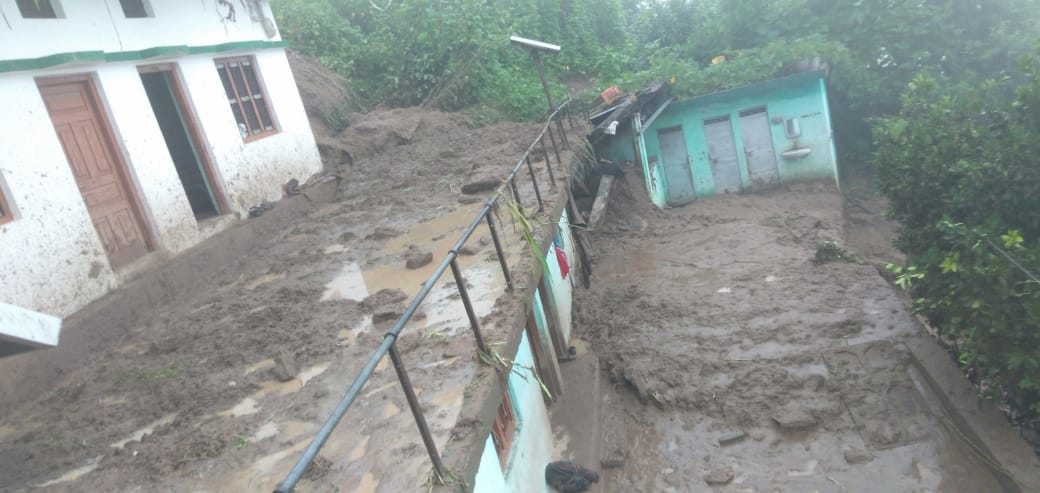
The India Meteorological Department’s Meteorological Centre Dehradun has forecasted heavy to very heavy rains in the next two days. This may accentuate the flooding situation in the state.
Of the total 13 districts in the state, a red alert has been issued for nine districts. These include Chamoli, Tehri, Haridwar, Bageshwar, Pithoragarh, Nainital, Almora, Champawat and Udham Singh Nagar. Dehradun, the state capital, is also expected to witness spells of heavy downpour.
Since the arrival of monsoon in the state, rain-related disasters are being reported. Last month, 45 people died and 127 were injured in rain-related incidents, while 61 rescue operations were conducted. On August 12, two women died in Rudraprayag district after an SUV plunged into a gorge as the driver lost control of the vehicle in heavy rain.
Predictably, villagers are gripped with fear. For instance, there are fissures and cracks in the land of Silwari Boonga. A boulder, displaced during the 1986 cloudburst, sits right over the village. With heavy rains and cloudburst, the boulder has displaced and landslides continue in the area, informed the local villagers.
“We are worried if the boulder displaces any further, it may come rolling down and flatten the entire village and kill hundreds of people,” said a worried Rauthan. “Our village land has developed cracks and we fear a portion of our land may get washed away into the river. Our crops are already destroyed,” he added.
Like Rauthan, Kulbeer Mithwan was preparing to go to bed on August 9 when he heard water gush down the gadera (natural water spring) just 20-30 metres away from his house in Silwari Boonga. “It was then I realised there was something wrong and rushed out to rescue people. The elderly in the village are living in perpetual fear,” Mithwan told Gaon Connection.
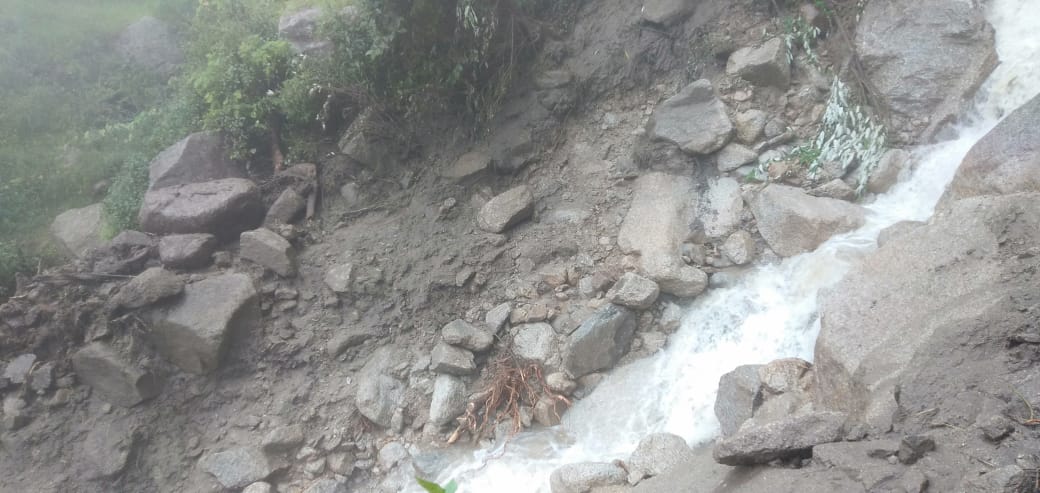
At present, due to heavy rainfall, many rivers in the state are flowing close to the danger mark. The Ganges river in Rishikesh and Haridwar is overflowing. “An alert has been issued for heavy to very heavy rains from August 14 to August 17,” Bikram Singh, director of Meteorological Centre Dehradun told Gaon Connection. The district administration has started evacuating people from low lying areas to safe places.
In Bageshwar district, water-level in Saryu and Gomti rivers is rising. The seasonal rivers in Dehradun – Rispana, Suswa, Bindal and Song — have led to flood-like situation in low-lying areas.
Since last month, heavy rains have not only left the village roads battered, but also disrupted connectivity. For instance, on July 23, a landslide triggered due to heavy rainfall in Munsiyari tehsil of Pithoragarh district killed more than 10 people. Gaila and Tanga Munyal villages also reported extensive damages. Eleven people went missing in Tanga village where five houses collapsed. In Gaila village, two houses collapsed and three people were buried under the rubble and died.
Earlier this month, a cloudburst left Dhapa and other hamlets in Munsiyari in shambles. “For now, people have been kept in make-shift camps and in government schools. Some people have taken shelter in safe places along with their cattle,” Harish Singh Dhami, Member of the Legislative Assembly (MLA) of Dharchula in Pithoragarh told Gaon Connection.
“We are extremely worried as the Gwalgaon area is sliding down. If it breaks apart due to the heavy rains, as is being predicted, then half of Dharchula town will be wiped off,” he added.
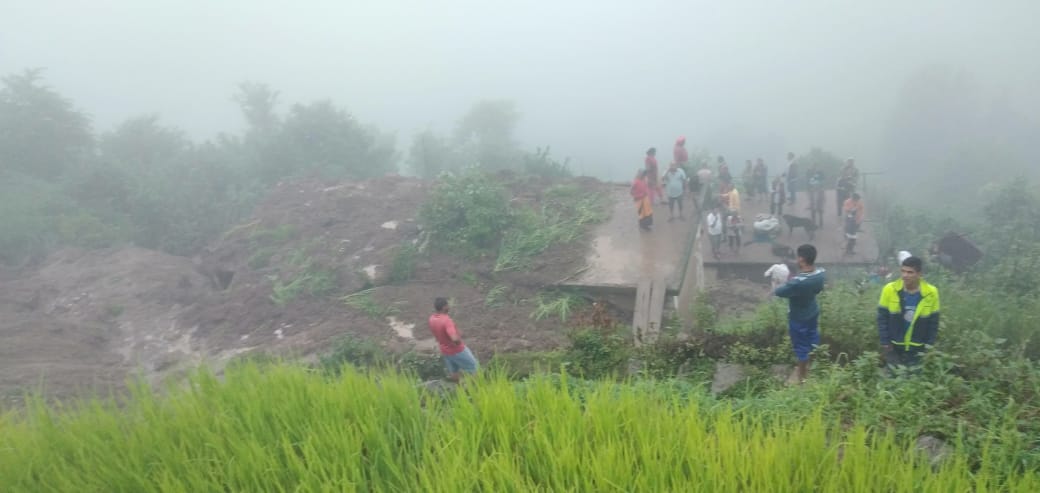
Landslides and ‘sinking’ villages
“These landslides are an outcome of road widening projects and deforestation in hills for the ambitious all-weather roads,” SP Sati told Gaon Connection. He is the associate professor of environmental science with Veer Chandra Singh Garhwali Uttarakhand University of Horticulture and Forestry, Tehri Garhwal.
Road cutting and widening is expected to trigger landslides, but the number of new landslide incidents is far more than was assessed. “In Bhatwari block of Uttarkashi district, which is a sink zone, we had installed a GPS [global positioning system] in Raithal, a small village, perched on the hilltop to see the ratio of crust deposition for earthquake prediction. But when the displacement was recorded, we found the entire village was drifting at the rate of 10 feet per year,” said Sati.
Similarly, in Mandakini Valley, there are five zones that are sinking. And the sinking process is expected to accelerate due to the on-going road widening activities in the region. Other areas in Pathi Tangri, Pursari, Maithana, Kameda in Chamoli district are also sinking due to road widening works, he added.
Last week, several state highways and national highways were blocked in the state due to continuous landslides. For example, along the Gangotri National Highway, a landslide in Swarigaad region of Bhatwari block left the roads connecting villages, such as Ayarkhal, Bhela Tipri, Dharasu Jogat, Jaspur, Bathedi, Udari, Bhukki Kujjan, and Dhauntri Siri, blocked for more than two days (53 hours).
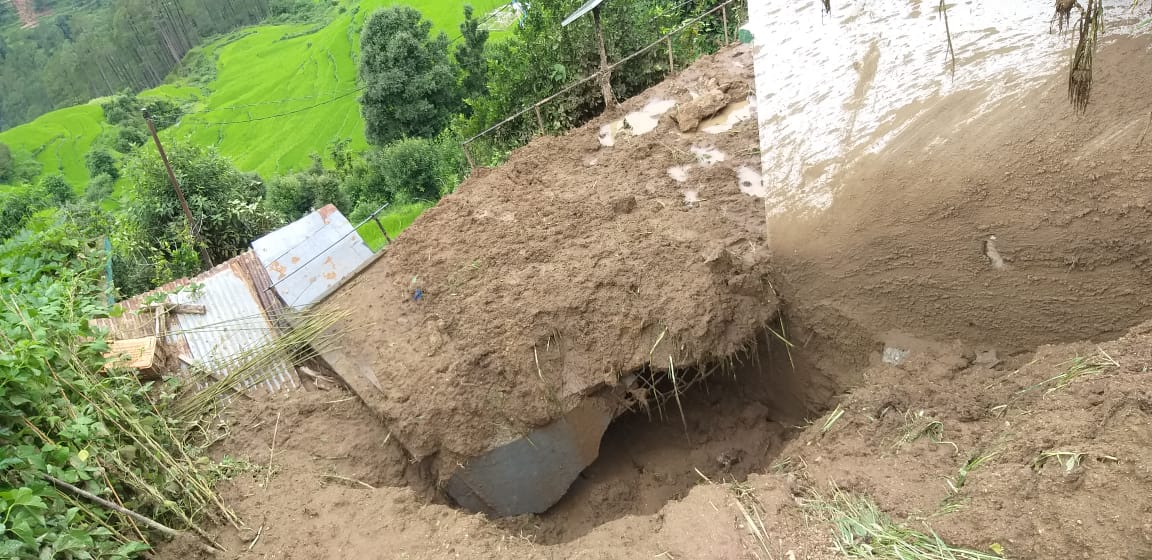
Making of another disaster?
In June 2013, heavy rainfall and cloudbursts caused unprecedented flash floods wiping out villages and decimating lives. As per official estimates, 197 people were killed, 236 injured and 4,021 went missing in the flash floods, which affected five districts of Uttarakhand. A total of 2,119 houses were fully damaged, 3,001 severely damaged and 11,759 partially damaged. The Kedarnath Valley was completely ruined.
One of the many reasons behind this disaster was unplanned construction and encroachment of the riverbeds.
To rebuild Kedarnath and give a push to tourism in the state, an ambitious all-weather road project is at present underway. The four shrines Kedarnath, Badrinath, Yamnotri and Gangotri are to be linked by all-weather roads.
“The government has not learnt from the previous disaster but is looking at it as an opportunity,” said Sati. “Indiscriminate and unscientific construction has put the Kedarnath Valley in danger because the glacial murrains [remains of old glaciers] are found till the helipad which may cause drifting in the future. In such a situation, if the region experiences torrential rain and flash floods, it may lead to severe consequences much greater than the 2013-floods,” he warned.
At present, a 12-metre wide road is proposed. But little thought has been given to making adequate parking facilities and the ecological damages such heavy construction may cause in the hill region.
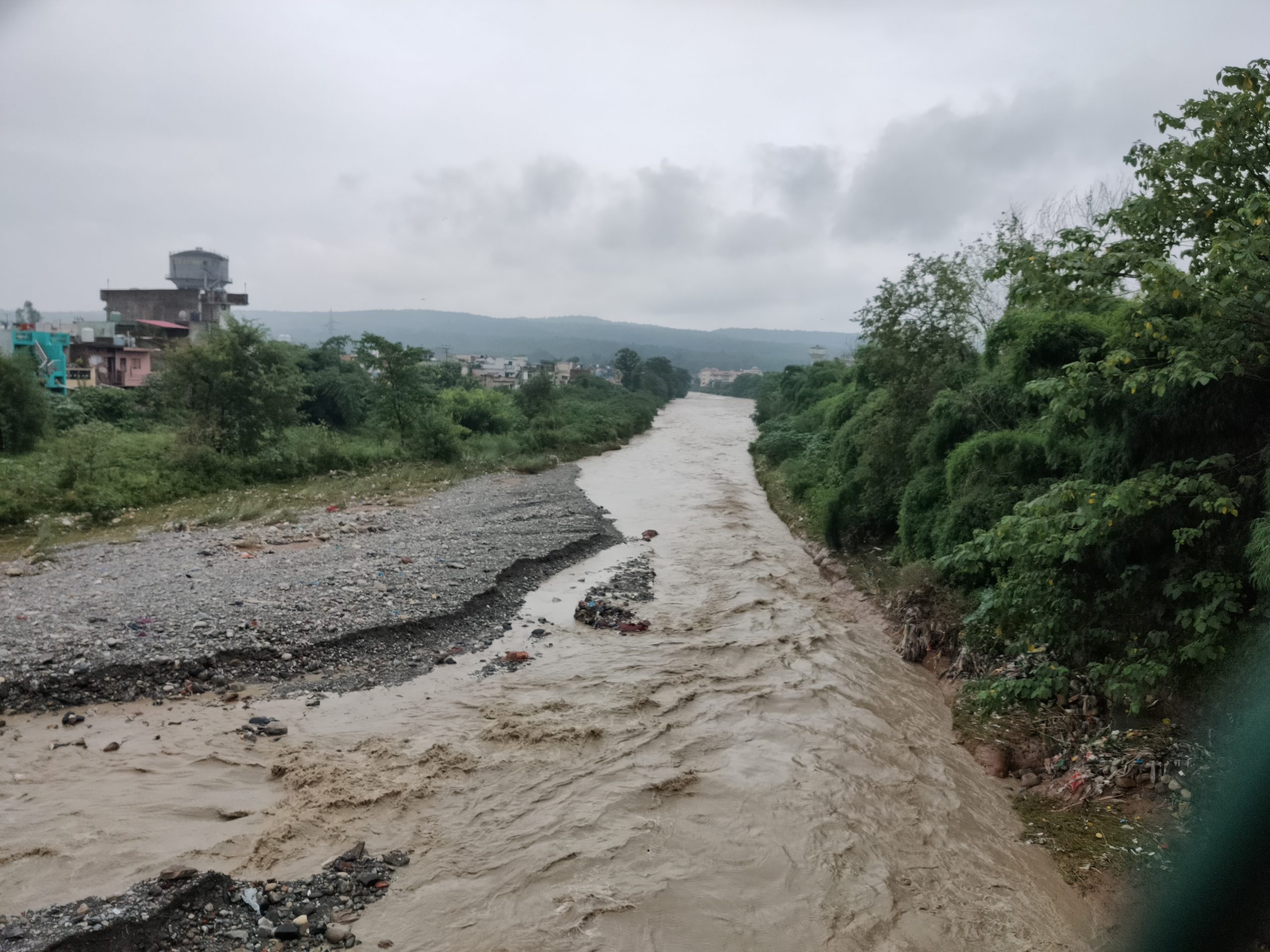
Radars for the hill state
The India Meteorological Department has plans for better weather forecast facilities in the state. At present, the weather predictions in the state are done using satellite, synoptic and automated systems.
“To make weather prediction accurate and timely, the state will soon get radars installed at three locations- Mukhteshwar, Surkanda Devi (Dhanaulti), and Pauri,” informed Singh. This will help in real time monitoring of cloud growth, rainfall intensity and rainfall products every 10-15 minutes. “Using the radar data, warnings can be issued one or two hours in advance for specific blocks and locations,” he added.
Meanwhile, the state government recently proposed construction of shelter homes in each district of the state to accommodate 5,000 people displaced during natural calamities in the future.
But, according to Saritha Thomas, founder of Mandikini Ki Awaz, a community radio in the state, communication is an important part of disaster management. “Without community participation and engagement, warning and alerts can be useless. To make people aware, there is a need to educate and train them on ways to mitigate such a disaster, and how they are expected to monitor their surroundings corroborating with weather prediction,” she told Gaon Connection.

Thomas is working with the local communities in Mandakini Valley for over eight years now. To engage, inform and educate people in rural pockets, she started a community radio, which is used to disseminate information to various villages.
At present, the state administration is on its toes to minimise impacts of ongoing flash floods. Shikha Suyal, disaster management officer-Bageshwar told Gaon Connection that all the district heads are on an alert. “Along with tehsildars, gram pradhans and local village bodies, people have been advised to stay indoors and not go near the rivers,” she said. Since communication is key to disaster management, through a WhatsApp group, Suyal and her team are ensuring the local media and people are updated regularly about water levels in the rivers and rainfall patterns.
According to Deepesh Chandra Kala, disaster management officer in Pauri, 47 JCBs have been deployed in the area to clear roadblocks. In case of emergency, the gram panchayats can coordinate through satellite phones already provided to them.
Megha Prakash is freelancer journalist based in Dehradun, Uttarakhand.

